
For about one and a half year I used my good old D700 as a second body in addition to my D4. A few weeks ago I have replaced the D700 with a used Df I could get in like-new condition for a really good price. The Df was my favourite candidate for a second body and I had been waiting for the right offer. Despite its retro design I am satisfied with the Df.
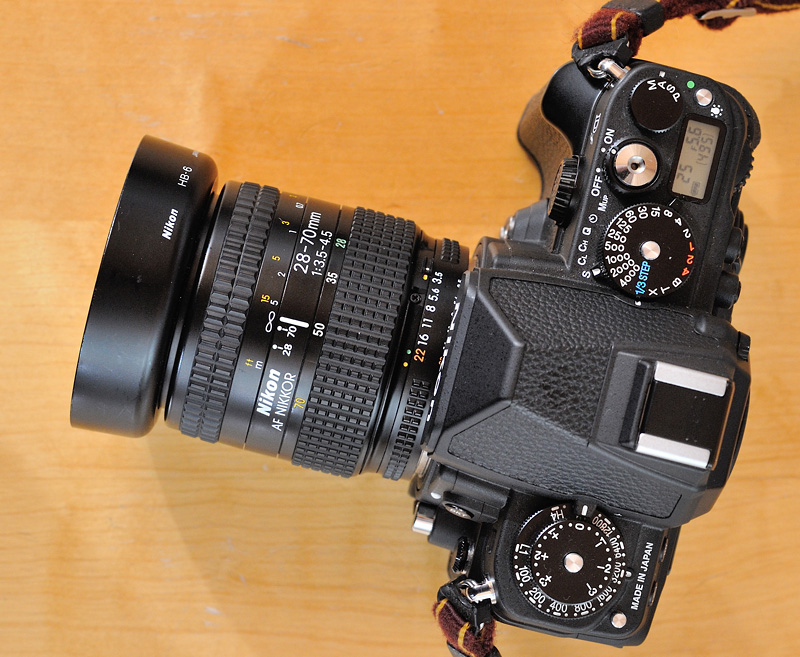
|
|
This September I had the Df along with me in Iceland. Most of the time the AF-Nikkor 28-70mm f/3.5-4.5 was mounted. |
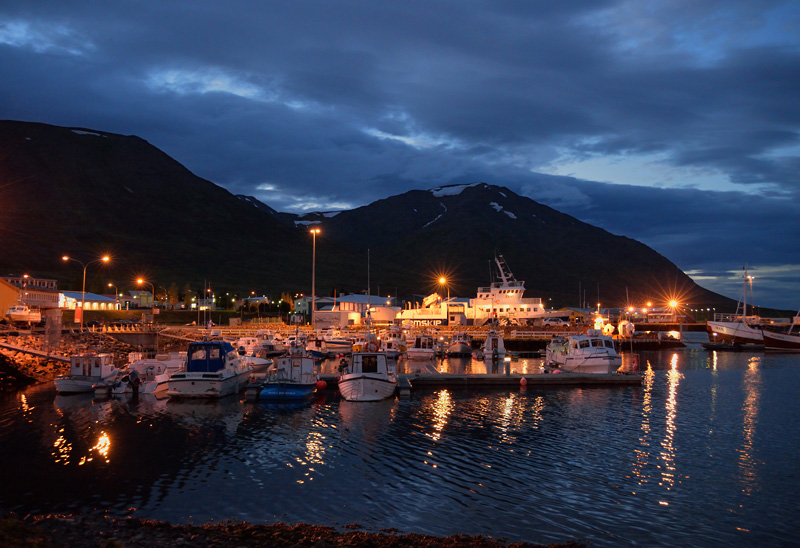
|
|
The 28-70 is not really a lens for available light photography, but the Df makes it possible: The little harbour of Dalvík, northern Iceland. Df plus 28-70mm @35mm, ISO 6400, F5.6, 1/15sec, hand-held. |
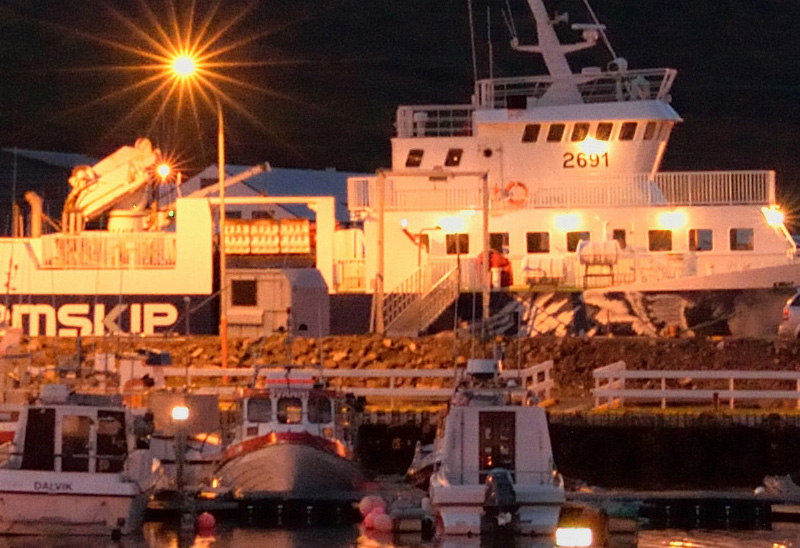
|
|
100% crop of the above image. The image was just raw converted with Capture NX2, "high ISO NR" was set to "normal". |
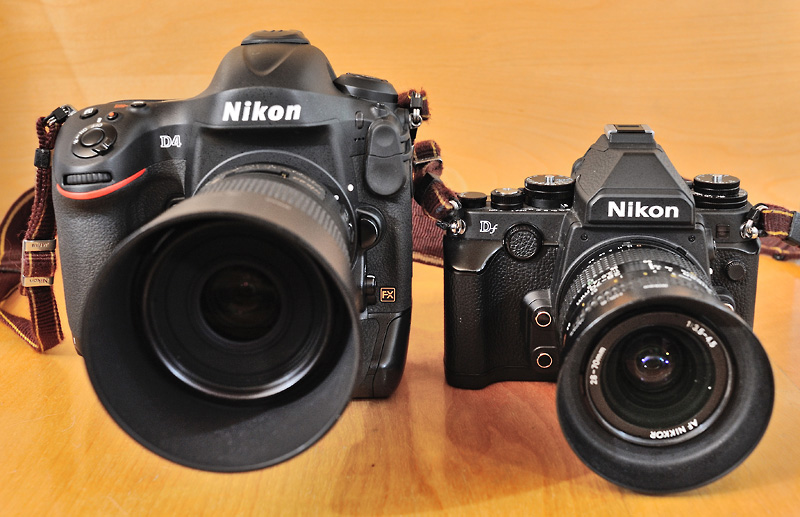
|
|
The Beauty and the Beast? The D4 is definitively a beast, but whether the Df is beauty is a matter of opinion... |
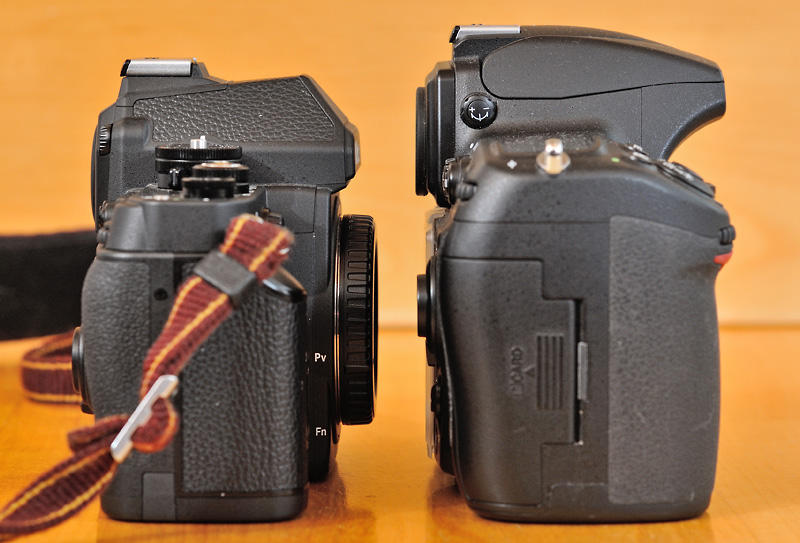
|
|
The Df is significantly smaller than the D700 and it weighs more than 300g less! |
From my point of view, the most important advantages of the Nikon Df are:
Although the Df is the smallest fullframe DSLR from Nikon: in terms of size it is not retro. The F3 has the same weight as the Df. Back in the 80s the F3 was not exactly a small SLR...
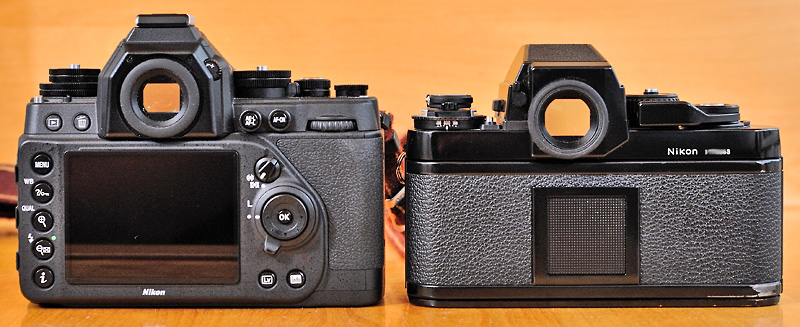
|
|
|
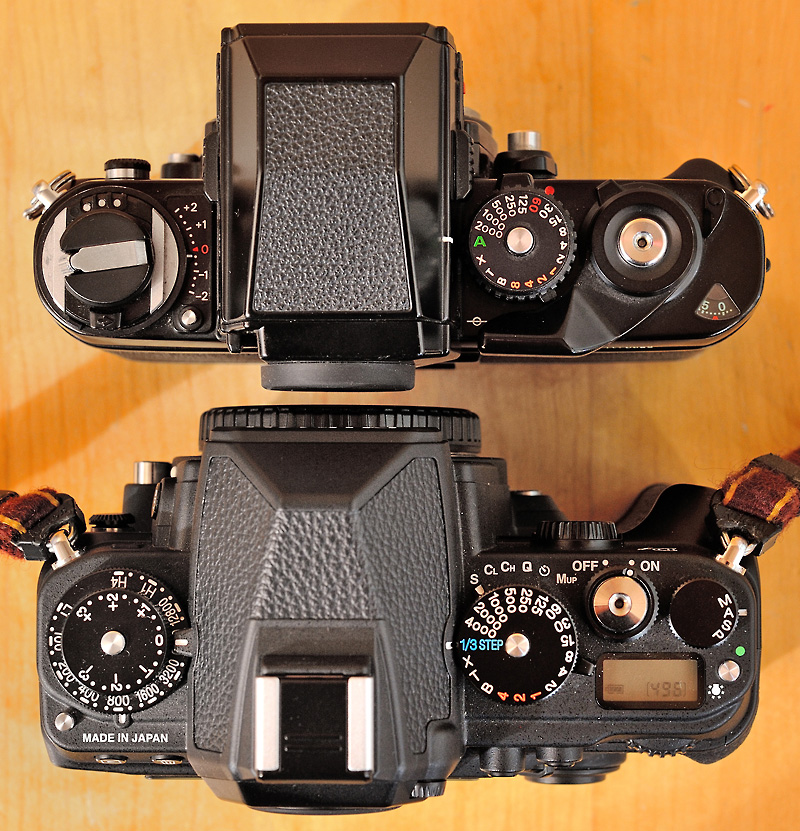
|
|
The F3 is much smaller than the Df! |
Sometimes you hear "the Df is the digital FM2". Of course, that is baloney, a DSLR cannot be a mechanical camera. Referred to the design it is also wrong - only the finder looks a little bit like a replica of an FM finder. The dials look more like those from the Nikkormat/Nikon EL series. But for example for the Df's mode dial, there are not any models in Nikon's history. The silver version (aka panda style) has a completely silver shutter speed dial, while every former Nikon SLR has a dial with a black topside...
Please, compare for yourself:

|
|
|
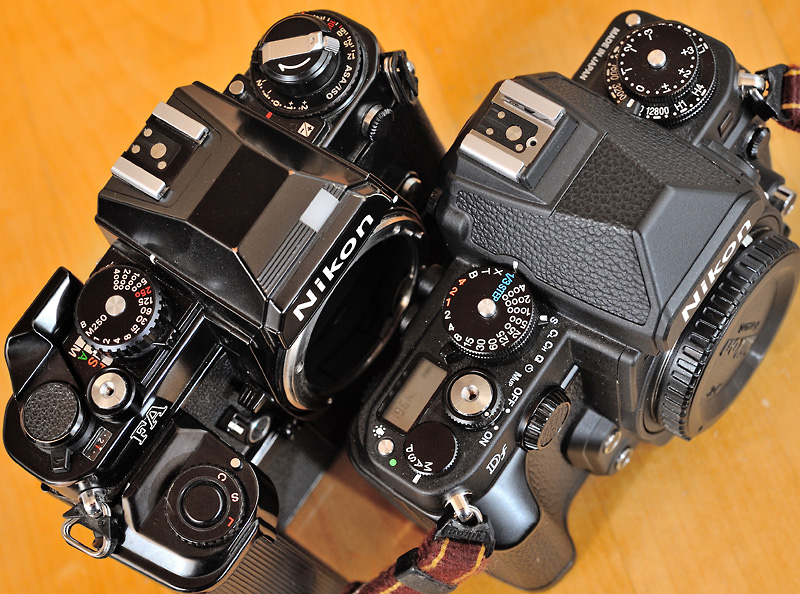
|
|
|
Nonetheless, the design is retro enough to let many people think it would be old gear. That is a serious advantage (not joking!): if an old man like me comes around with the Df and an older Nikkor in his hand they think "Oh, how nice - grandad is still using his old camera". They don't perceive me as a serious photographer. Moreover, as an old photographer I do not check the display after each shot, which makes the usage of the retro camera even more authentical :)
At least I have a tip for Nikon's marketing department: don't sell the DF only in matt black and silver but also in a "vintage"-style colour: mainly glossy black, but with golden edges!
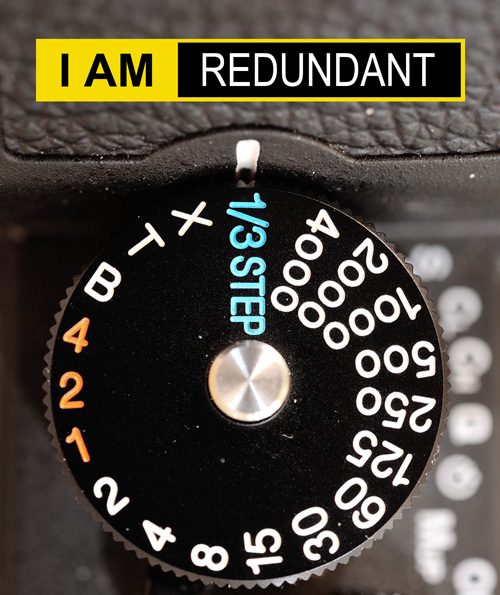
|
|
|
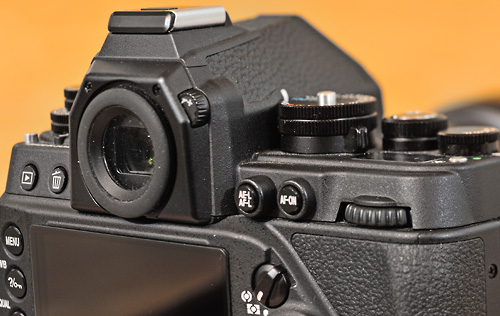
|
|
The back command dial is where you expect it. |
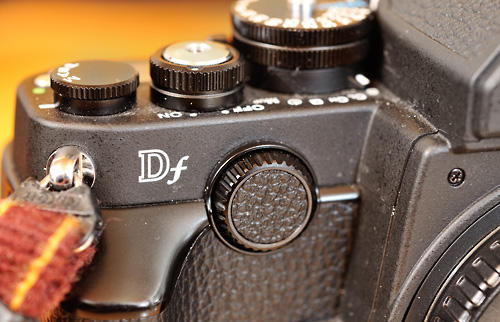
|
|
Unfamiliar front command dial. |
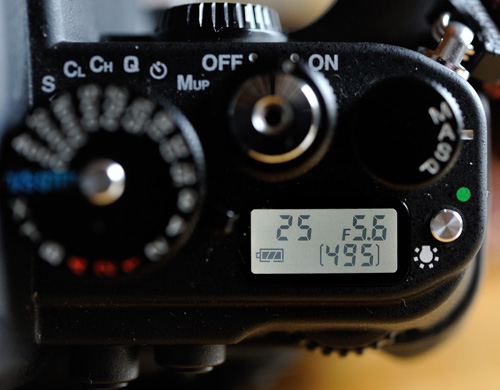
|
|
The display is small but has a very good illumination. |
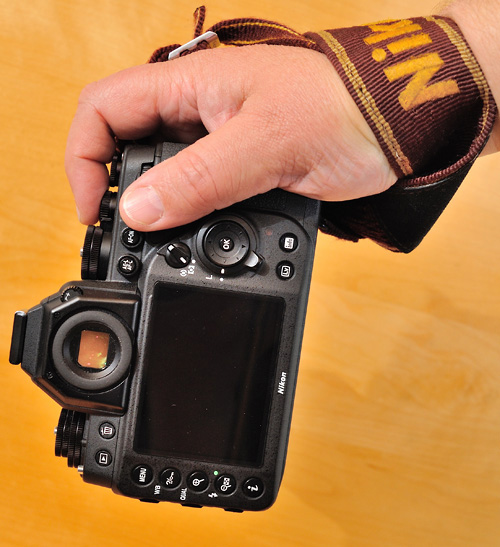
|
|
|
The main question for me was about the ergonomics of the camera: is it a problem to use the Df in turn with the D4? Is the retro design a problem in daily use?
Let's begin with the shutter speed dial. It is a main element of the retro design. Nice to look at but almost useless! It offers a locked "1/3 STEP" setting, that activates the command dial instead. Only with the command dial you can use the complete shutter speed range from 30sec - 1/4000sec (in 1/3 steps).
In the menus you can also activate a - in my eyes confusing - mixed mode where you use both, the shutter speed dial and the command dial: with the shutter speed dial you select the speed and with the command dial you can alter it in 1/3 steps.
In the 80s and early 90s I solely photographed in M mode. End of the 80s I replaced my FM2 bodies by F-801 cameras. One of the main reasons was the F-801's command dial, which is much better to use than the shutter speed dial of the FM2. Moreover, it allowed to set the shutter speed in 1/3 steps. I don't want to go backwards - the shutter speed dial of my Df is always disabled! The back command dial is just at the right position as we know it from the other Nikon DSLRs.
In the middle of the 90s I switched to A mode and matrix metering most of the time. Still today, the aperture priority mode is my preferred one. The current ergomic generation of Nikon bodies - started in 1996 with the F5 - offers an additional command dial on the frontside of the grip. In later models (starting with whe F100), the option to interchange the function of the two dials has been added. The Df is no exception here and I use the back command dial for the aperture setting - just like I do with my D4 and D700.
Sometimes, e.g. if I switch a camera into M mode, I also need the front command dial. The Df's front dial has a different orientation compared to the other Nikon DSLRs. Moreover it feels a bit sticky. A dial with "normal" orientation would have been much better!
The top display is fine but much smaller than the one of other DSLRs. Therefore it shows much less information, for which you must look through the finder or onto the back display.
The D4 and D700 have their release mode dial on the left-hand side. The DF has it on the other side.
Exposure compensation: Nikon's traditional DSLR design allows it with the right hand while looking through the finder: press the button and rotate the command dial. The Df has a dedicated dial for it on the left-hand side of the camera. If you have a heavy lens on the camera you must use your right hand for it, which is not a good solution. Nikon would have done better to place the exposure compensation dial on the right-hand side, for example instead of the redundant shutter speed dial!
The ISO setting is easier on the Df: you need just one hand. On the D4 or D700 you need both hands.
Setting the AF system is the same like it is at the D4.
Although the grip is much smaller than the one of other DSLRs, the handling of the Df isn't a problem. But if you carry the camera for a longer time like I often do - see image to the right - you will get a problem if a heavy lens is mounted. My limit for "heavy" here is at about 800g.
Conclusion: the camera looks old but it is not completely matured. Nevertheless I can live with its ergonomics.
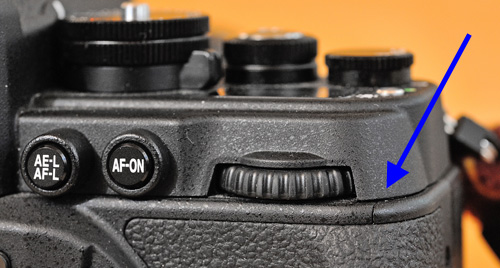
|
|
There are a few sharp edges, for example here. |
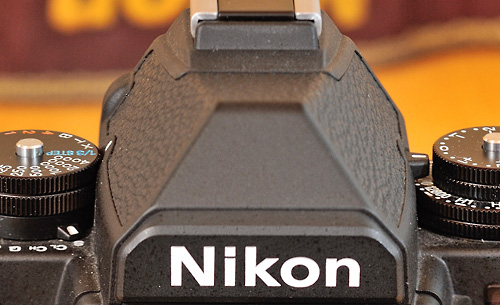
|
|
They tried to imitate the leatherette of the FM/FE series finders. The result looks a bit poor at the borders! |
Overall the build quality is fine as we know it from Nikon.
But surprisingly I have to address some minor issues, see images to the right. Having the price of the camera in mind, I wouldn't expect anything like this!
Nikon says the weather sealing would be on the level of the D800 series, which is fine!
The top and bottom covers and the backside are made of metal and leave a sturdy impression to me. The frontside, especially the grip, is mostly made of plastic and appears a bit less sturdy.
The often-critisised bottom cover for battery and memory card is well-made in my opinion!
For the shutter Nikon confirms a life-cycle of no less than 150000 shots, which is also fine.
The Df is a very quiet camera in terms of shutter and mirror noise. That makes this small camera even more inconspicuous!
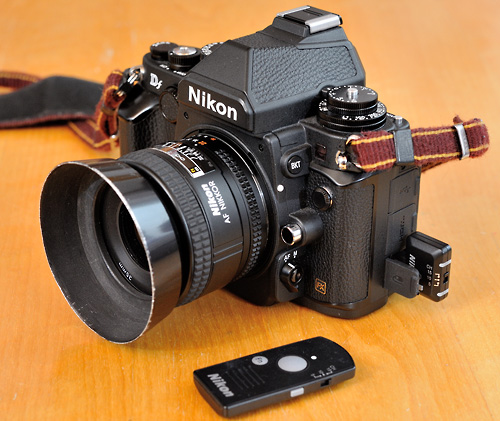
|
|
The WR-R10/WR-T10 is a very good way for remote controlling the Df in the field. |
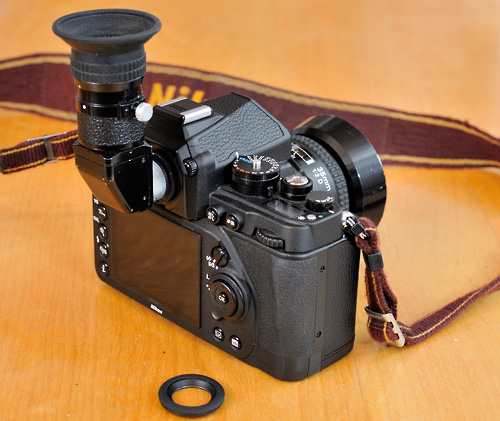
|
|
The right-angle finder DR-3, mounted via a DK-7 adapter. |
The Df fulfils my most important requirements:
I am not sure whether the sales of the Df are good enough to hope for a successor. However, I have some ideas for a Df2. As I mentioned above: a front command dial with the common horizontal orientation, an exposure control on the right-hand side, better AF system, ...
But how about building in some more real retro features that would make the DF2 more unique?